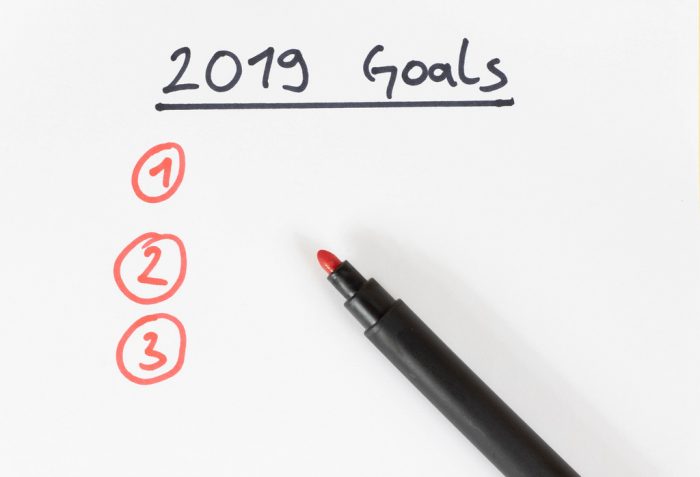The beginning of a new year is exciting and leaves room for new opportunity and growth. It excites us all to think of reaching a health resolution that we set out for the year to come. But rather than succeeding our goal for the year, many people fall short within a matter of weeks.
Here are the top four mistakes people make when choosing a health resolution, followed by eight secrets to achieving your resolution:
Mistake #1: Choosing too many resolutions
Are you more ambitious than others when it comes to New Year’s resolutions? You may have realized that there are multiple changes you want to make to your health and what better time to start than the New Year!
Unfortunately, putting too much on your plate could have the opposite effect and leave you stagnant; confused about where to start and what to do next. Stick to the most pressing resolution for now. Once you succeed in that resolution, the momentum will propel you to move forward to the next one.
Mistake #2: Choosing a resolution that is too vague (Example: Lose Weight)
A vague resolution is all encompassing; it’s too hard to figure out what actions will make it a reality. Get very specific about your resolution. Such as “lose 20 pounds within 3 months, in time for Roger’s birthday.”
Mistake #3: Choosing a resolution that is unattainable
Example: A person who doesn’t currently have a workout routine makes their resolution to exercise 5x a week. In this case, you are setting yourself up for failure because you made a commitment too big for your lifestyle and your body.
Your body will not commit to exercising 5x a week if you don’t even currently exercise 1x a week. You would be in too much physical pain your first week of the New Year and then give up and feel like a failure.
Most people don’t follow through with their resolution because they choose something too far out of reach. Choose a resolution that is achievable.
Mistake #4. Choosing a resolution you think you HAVE to do
Example: A vegetarian who eats mostly cooked food makes a resolution to become a raw fooder because she thinks she “should”, not because she wants to.
If you are making a resolution that you think you “should” do, but don’t really want to do, you are not being true to yourself or your body. According Harvard Medical School, researchers say that you’re more likely to achieve your resolution if you choose one based on your own interests and values rather than on expectations and pressures.
Eight Secrets to Achieving Your New Year’s Resolution:
- Make an attainable, specific New Year’s Resolution
- In your journal, describe WHY you want to achieve this goal. How will it benefit your life? How will your life be better?
- Create a plan. If you want to start cooking homemade meals 5x a week, look at your calendar. What days are you free to cook? Is it possible to cook 5 days a week? Or can you condense the cooking and eat leftovers 2x a week?
Look at what works in your life, and make sure you can do it, before committing to it. Also consider obstacles that have stood in your way in the past. What obstacles or challenges do you anticipate? Decide how you will overcome them. Then turn your answers into commitments. For example:
Obstacles: it’s hard to wake up earlier, and I’m too tired to exercise after a long workday.
How to overcome: I’ll put my alarm clock on the opposite side of the room, so I have to get out of bed to turn it off. I’ll plug my ipod into my alarm clock. So instead of a beep, I’ll be woken up by my favorite uplifting song. I’ll put a picture of me five years ago (when I was slender) on my bathroom mirror.
- Write down your goal (and deadline for completion) and post it up where you can see it. Writing something down solidifies the intention and having it in sight is a great daily reminder.
- Tell everyone you know. Keeping a resolution hidden will make it less real. The more people in your life that know about your intention, the better. Plus it’s great to have support if you fall behind or need some encouragement.
- Write out affirmations describing the life you have, now that you’ve reached your goal. For example, if your goal is to lose 20 pounds within 3 months, your affirmations might include:
- a) I love to exercise
- b) I love the “runner’s high” I get from exercising
- c) I can run a mile without stopping
- d) I love looking at myself in the mirror
- e) I turn heads when I walk in a room
- f) I easily fit into my sexy clothes from five years ago.
Each day, read your affirmations to yourself out loud. The best times to do this are right after waking up and right before going to sleep. If you have too many affirmations and not enough time, record yourself speaking them. Then listen to the recording at least once a day.
- Imagine you’ve achieved your goal. Then spend 20 minutes journaling about what your life is like, now that you’ve achieved your goal. For example, if you’re a single woman, your journal entry might look like this:
“I just ran a mile without stopping. My heart is beating fast. I’m breathing heavily. I feel alive. Now I’m looking at myself naked in the mirror. I look great! Heck, I could be a model! Every day, handsome men are noticing me, flirting with me, and asking for my number. Now I’m putting on the sexy clothes I wore five years ago, and they fit me perfectly. I have plenty of energy to last through my workday. (Etc.)”
This journaling exercise puts the law of attraction to work for you. When you vividly picture the life you’ll have, once you’ve achieved your goal (and feel the emotions that come with it), your positive thoughts will manifest. Do this journaling exercise everyday if you can – if not for 20 minutes a day, then at least for 10 minutes a day.
- Reward yourself. Each time you reach a milestone on the way to your resolution, reward yourself. For example, is there something a little pricy you’ve been wanting to buy yourself? Make that something a reward you get, once you reach the halfway point. Instead of doing a boring homework, run a half-marathon distance and order online homework help or a cleaning service. Then decide on another reward for achieving your goal. These extra incentives motivate you further.
As an example, I once set a goal of waking up at 7:30am every day for a month. Each day I failed, I would give my roommate $10 (as a penalty). However, if I succeeded six days out of every week, then at the end of the month I’d buy myself a $200 dehydrator.
Positive reinforcement goes a long way. Most of us set out to reach plenty of goals all the time, but never leave room for celebrating our accomplishments.
“Sustainable” is the key word here. Most people try to make health changes but don’t think about how to weave it into their lives as a habit.
If you don’t have a workout regimen, choose a physical activity you love or at least like, and do it 1x a week. Then increase it a few weeks later. Gradual is key because by the end of the 6 months, small changes become huge changes. And most importantly, those changes are sustainable.
In addition when you make a commitment, no matter how small, you feel accomplished. That accomplished feeling gives you momentum to achieve more. So you naturally reach for higher goals from that momentum.
On the other hand, if you make a commitment that’s out of reach, you are likely to fail and beat yourself up about it. Once you are in that low state of mind, no positive changes will occur. Guilt does not compel you to reach a goal; accomplishment from small goals does.
Another good thing to remember… we don’t always stay on track. It’s how you react to that “failure” that can make or break your resolution. Do you beat yourself up about it? Or give yourself compassion and move on? If you focus on the changes you are making (no matter how small) – instead of what you haven’t achieved yet – you’re on your way to success.












Read 0 comments and reply